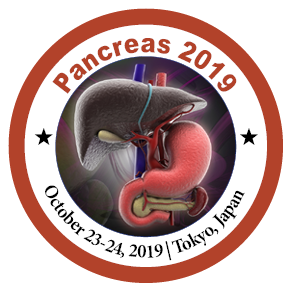Weihua Gong
Zhejiang University, China
Title: Suppression of YAP/TAZ-Notch1-NICD axis by Bromodomain and Extraterminal Proteins inhibition impairs liver regeneration
Biography
Biography: Weihua Gong
Abstract
Background: Biological mechanisms that control liver regeneration remain poorly defined. However, these mechanisms are remarkable issues in the clinic that affect management of hepatic loss caused by liver surgery, traumatic injury, chronic infection, or liver poisoning. Increasing evidence has shown that various growth factors, cytokines, and metabolic signaling pathways affect the liver regenerative process. Our aim is to study the effect of bromodomain and extraterminal (BET) protein inhibition on liver regeneration and its mechanism.
Methods: We studied the role of BET protein inhibitor, JQ1, in liver regeneration in a mouse model after 70% partial hepatectomy (PH). We evaluated yes-associated protein (YAP)/transcriptional co-activator with PDZ-binding motif (TAZ) and Notch signaling pathways, which were affected by BET protein inhibitor in mouse hepatic tissues in vivo and AML12 cell lines in vitro. We evaluated the role of YAP/TAZ signaling pathway inhibition in liver regeneration in a mouse model after 70% PH. Moreover, we analyzed the relationship of YAP/TAZ and Notch signaling pathways via overexpression or RNA silencing of YAP in AML12 cells. Moreover, we used YAP overexpression mouse model to examine whether it can rescue liver regeneration damage caused by inhibition of BET proteins.
Results: In this study, we report that BET protein inhibitor JQ1 molecule impairs the early phase of liver regeneration in a mouse model after 70% PH. Mechanistically, YAP/TAZ and Notch1–NICD pathways were suppressed by BET protein inhibitor in mouse hepatic tissues in vivo and mouse AML12 cell lines in vitro. By using YAP inhibitor, we confirmed that liver regeneration was impaired by the inhibition of YAP/TAZ pathway in vivo. Furthermore, the study showed that YAP knockdown by shRNA in normal mouse hepatic cell line downregulated Notch1 signal transduction, whereas YAP overexpression promoted Notch1–NICD signals. Specific overexpression of YAP in mouse liver could rescue the effect of BET protein inhibition on liver regeneration injury.
Conclusion: These results revealed the crucial role of the YAP/TAZ–Notch1–NICD axis in liver regeneration. Therefore, BET protein inhibitors must be used in caution in the treatment of hepatic diseases because of its suppressive roles in liver regeneration.

